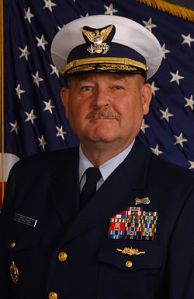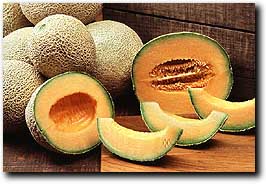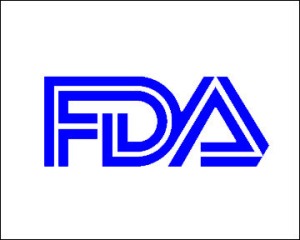 For those of you who don’t know me personally, read my blog or follow me on twitter, I have two great passions in life: emergency responses, especially to foodborne disease outbreaks, and leadership. I recently came across a Harvard Business Review interview with Admiral Thad Allen, USCG (Ret.) in which the Admiral reflects upon his leadership during the federal emergency responses to 9/11, Hurricane Katrina, the earthquakes in Haiti, and the Deepwater Horizon oil spill. His response to the first question in the audio interview posted on HBR.com reflects on the complexity of leading through complex disaster responses involving several agencies, and it should weigh heavily on foodborne disease outbreak leaders in government, industry, academia, and consumer groups. My complete thoughts on the brief quote below:
For those of you who don’t know me personally, read my blog or follow me on twitter, I have two great passions in life: emergency responses, especially to foodborne disease outbreaks, and leadership. I recently came across a Harvard Business Review interview with Admiral Thad Allen, USCG (Ret.) in which the Admiral reflects upon his leadership during the federal emergency responses to 9/11, Hurricane Katrina, the earthquakes in Haiti, and the Deepwater Horizon oil spill. His response to the first question in the audio interview posted on HBR.com reflects on the complexity of leading through complex disaster responses involving several agencies, and it should weigh heavily on foodborne disease outbreak leaders in government, industry, academia, and consumer groups. My complete thoughts on the brief quote below:
Admiral, facing such a big, complicated crisis, how do you start? Do you approach this like a military operation?
“…When you move into what I’m going to call a whole-of-government response, and this is a hurricane response, an oil spill, doesn’t matter what it is, you’re really not talking about unity of command at that point you’re really talking about unity of effort. Because what you have is a number of cabinet officer, cabinet agencies, that have different jurisdictions, responsibilities, all of which come to bear on the problem, all of which can be used to address the problem, but also carry with it responsibilities for them to actually do their jobs.”
Coordinated investigations of foodborne disease outbreaks are also complex in that they require the coordination of dozens of state and local health departments, CDC OutbreakNet and PulseNet, FDA, USDA, potentially DHS (Department of Homeland Security), and one if not dozens of food producers, manufacturers, distributors. Typically the governmental investigation process is coordinated by CDC OutbreakNet leaders who coordinate information sharing, hypothesis generation, and continuous cooperation with federal regulatory agencies responsible for contacting food companies and state and local health departments responsible for interviewing outbreak cases. Often an Epidemic Intelligence Service (EIS) Officer will lead the response by compiling state epidemiological data, facilitating conference calls, and interacting with federal regulatory agencies. The ability to communicate a sense of urgency in the investigation, empower partners, and manage extreme complexity are leadership talents that could increase the performance of cooperating partners and the timeliness of the response system as a whole.
“So the number one issue in my mind is creating unity of effort. And creating unity of effort will vary with the specific incident you’re involved in, having been involved in several recently including 9/11, the Haitian earthquake response, Katrina, and the oil spill, how you achieve unity of effort is slightly different in each case based on the demands of the situation and the effects you’re trying to achieve but overall what you’re trying to do is aggregate everybody’s capabilities, competencies and capacities to achieve a single purpose, still taking into account the fact that they have individual authorities and responsibilities.”
Foodborne disease epidemiologists are aware of variability in the epidemiological presentations of outbreaks and its impact on the course of outbreak investigations. Depending on the supply-chain complexity of the food item that is causing a cluster of human illnesses (One brand of melons vs. one peanut paste present in 2,000 commercially available products), an outbreak investigation could require months of epidemiological interviews, dozens of product tracebacks, and interaction with hundreds of food companies. Creating a unity of effort (and thus achieving desired effects) during a multistate foodborne outbreak investigation requires talent proportional to the complexity of the outbreak.
Undoubtedly the course of the investigation can have consequences on the unity of effort. During the 2008 outbreak of Salmonella Saintpaul associated with Jalapeno and Serrano peppers, a long and difficult outbreak investigation and an ultimately erroneous public health advisory created doubt in governmental credibility and competency during the latter days of the outbreak. Similarly the long, difficult, and confusing investigation of E. coli O104 associated with fenugreek sprouts in Europe drew criticism from experts from across the world. These effects can create challenges for leaders who must achieve unity of effort to identify the cause of the outbreak and take public health action if necessary. (Which poses the question, can a unity of effort be achieved if Fresh Del Monte is ever again circumstantially involved in outbreak investigation leadership? Despite a recent major lapse of professional trust I trust that the answer is yes.)
“That makes it a much more complex matrix to manage and it makes it a much more complex management challenge, but it’s a feature of our democratic government and its one of those things where we need to start raising leaders that have the capability to do that.”
Which brings us to how we train leaders for foodborne disease outbreak investigation and control. Leaders include environmental health specialists and epidemiologists in state and local health departments, CDC OutbreakNet and PulseNet leadership, inter-agency liaisons, regulatory agency leadership, and food industry senior leadership, all of which manage complexity on some scale during their participation in a multistate investigation. What is required in an outbreak investigation leader, and how much of what is required can be trained? With a background in organizational culture, one could hypothesize that an experienced, well-known and influential leader in a central role such as OutbreakNet would be more able to create unity of effort early in a multistate outbreak investigation than a rookie, given an intimate knowledge of the system, acquired experience from past outbreak investigations of varying complexity, and long-standing relationships with leadership in cooperating agencies.
However upon first examination it appears that our current system of multistate foodborne disease outbreak investigation coordination at CDC is not utilizing leaders with extensive experience in foodborne disease outbreak investigation. EIS Officers, who rotate in OutbreakNet for two years gain tremendously-specialized leadership skills, yet usually leave OutbreakNet for a higher-paying position in CDC. I don’t question the value of the experience to EIS Officers, but from an emergency management perspective, do they have the acquired experience and influence to lead a national emergency response? It’s not just EIS officers, it’s everyone working their way up the ladder in the federal agencies. Unless employees are passionate about their work, they are able to apply for unrelated, higher-paying jobs in different areas of the federal government. The actual pay structure of federal agencies provides an incentive for employee turnover, which may be counterproductive to achieving institutional memory, a unified culture of outbreak leaders, and unity of effort in times of crisis.
Does this really matter? Does the system need to change? Do we need to stop relying on EIS Officers as outbreak investigation leaders? Do we need to incentivize career-specialization in foodborne disease outbreak response in relevant federal agencies? A giant leap forward in public health workforce development, knowledge management, and performance evaluation informatics could provide an evidence base for any decisions about restructuring federal food safety responses, although it seems such a breakthrough is years into the future. For the time being it seems the system works somewhat efficiently most of the time, thanks in large part to foodborne outbreak responders like Dr. Ian Williams, long-standing Chief of the Outbreak Response and Prevention Branch at CDC who works closely with EIS Officers in OutbreakNet during multistate investigations. His extensive experience in multistate investigations and relationships with partners bolsters the culture of multistate outbreak responders. But perhaps we should be mindful of the potential importance of leadership in determining multistate outbreak investigation performance in the future and how our current system develops those leaders. Developing a unified sense of urgency and a culture of performance across the federal, state, and local outbreak response system will be a challenge because of the variation in state and local public health laws and the lack of central management of the workforce. Individual leaders of outbreak response agencies should strive to create and support cultures of best practice in order to ensure and improve the overall timeliness of public health action during multistate (and local) foodborne disease outbreak investigations.




